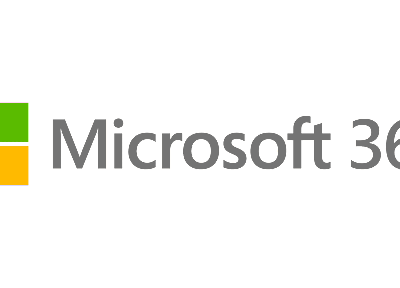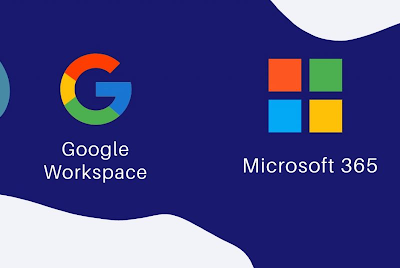As the future of work becomes more remote, effective virtual communication is more crucial than ever. It all boils down to having the necessary tools to enable cooperation. The right set of tools may boost your team’s productivity and free up your time to focus on your most important tasks. Workplace cooperation looks different everywhere.
Teams have different demands and obstacles when it comes to working together, depending on their size, structure, and geographic dispersion. Fortunately, there is no shortage of collaboration technologies to help teams get things done. In this guide, I will go through the different types of collaboration tools you must know in 2022.
What are Online Collaboration Tools?
Online collaboration software enables working together on professional tasks easier and faster. It eliminates bottlenecks in feedback and approval procedures and enables real-time communication.
Communication, project and task management, file sharing, and management are the three primary areas of functionality for collaboration applications. Some products prioritize one feature set over another.
These employ a best-of-breed approach and perform effectively if they provide integrations. Slack, for example, is an online team collaboration platform that focuses on chat and file sharing. It also has audio and video conferencing features. Everything else is integrated with other software tools.
Many of the tools mentioned above are not exactly comparable since they each have somewhat distinct specializations. Depending on your company’s requirements, you may choose to invest in a variety of collaboration tools. Many teams, for example, utilize a messaging service like Slack for casual communication and web conferencing software to hold online meetings.
Top 8 Types of Collaboration Tools:
Instant Messaging:
Instant messaging is a kind of internet communication that links two or more individuals in real-time. Stand-alone instant messaging software (apps) allow for session-based exchanges of text, voice, and video communication, as well as files and information.

Companies utilize instant messaging software to increase communication among employees who may be in different departments, locations, or even countries. Emails and phone conversations are slower and more difficult to use than instant messaging. It’s a quick method to ask simple questions, suggest ideas, and even hold live polls.
DMS:
Document management, often known as Document Management Systems (DMS), is the use of a computer system and software to store, organize, and track electronic documents as well as electronic pictures of paper-based information obtained using a document scanner. Businesses may increase team productivity by implementing document management solutions.

A DMS allows you to create, upload, save and share files with anybody. Knowledge moves freely and securely throughout the business, increasing team building, team brainstorming, and teamwork performance.
Video Conferencing:
With built-in capabilities like chat, screen sharing, and recording, video conferencing software allows for online communication for audio meetings, video meetings, and seminars. These applications are used to facilitate long-distance or international communication, improve cooperation, and save money on travel.

Video conferencing is a collaboration tool that enables organizations to have meetings with partners, clients, and workers situated in various locations while seeing and talking to them in real-time. Without having to travel, you may plan product demo visits, interview prospective workers, or explore a new partnership with this communication software.
Task Management Tools:
Collaborative task management technologies simplify the planning and execution of remote and complicated projects without breaking the bank or losing track of moving elements. To make task management easier, the finest collaborative task management software has the following features: Various task views, such as lists and Gantt charts.

Task management software provides a list of tasks that may be checked off when they are performed. The user either generates tasks or is assigned tasks by a supervisor, and when a job is performed, others might be alerted. Online whiteboards, job prioritizing, and timetables to achieve deadlines are some of its primary features.
Idea Management:
Brainstorming meetings within a team may be a useful approach for exchanging knowledge and determining the best solution to an issue. Idea management or topics formalize this process by providing a place to record and store ideas for later assessment and execution. The core of this idea management tool is that it provides a centralized location for all of your projects and ideas.

It will allow you to create your own structure, organize brainstorming sessions, and customize it to your needs and preferences so that you can brainstorm, develop, gather, share, and analyze all of your ideas.
Knowledge Sharing Tools:
Collaborative knowledge sharing connects the learning and knowledge processes to improve organizational learning. Communication, idea exchange, and information transfer all contribute to the expansion of knowledge. This may be accomplished through face-to-face contact, talks, faculty development initiatives, and industry-institute collaborations.

These collaboration tools enable firms to construct wikis and manage information and internal communication in an organized manner. Wikis are accessible to all team members, allowing many contributors to contribute information. Additionally, some solutions allow you to designate roles such as contributors, editors, administrators, and viewers.
Online Shared Calendars:
The shared calendar simplifies the organization’s appointments and meetings by eliminating the need to consult with all participants. The person planning the event selects a time period, confirms the availability of the other attendees and the meeting room, and then sends out an invitation.

As a result, you save a significant amount of time in fostering cooperation. You save time by using a shared calendar instead of going back and forth with them to find the best day and hour. Again, utilizing Calendar is like having a personal assistant who handles all of your schedules.
ESN:
An Enterprise Social Network (ESN) is a digital collaboration platform that enables a company’s workers and partners to build communities in order to efficiently interact and cooperate. It enables individuals to connect with one another and share knowledge and material. It is an internal, private social network that businesses frequently utilize to facilitate employee networking.

The key advantage of these collaboration tools is that they look like other popular social media platforms, so employees are already familiar with how to use them because they have used comparable interfaces like Facebook and Twitter.
Conclusion:
Collaboration tools are the foundation of every growing firm. Collaboration solutions allow you to keep in touch with your customers and staff, share ideas and expertise, and complete tasks more quickly and efficiently.
There are several types of collaboration tools on the market, but not all are appropriate for all enterprises. It is critical to understand your needs and discover a solution that will suit those demands.
As a result, there exist online collaboration solutions for almost any corporate endeavor. Furthermore, your team does not need to be geographically dispersed to benefit from these solutions.
Using these solutions, in-house teams may also better execute projects, optimize resources, and reach a higher degree of transparency and unprecedented teamwork. If you want to become more efficient and productive in your business, it’s time to think about and implement these techniques.





